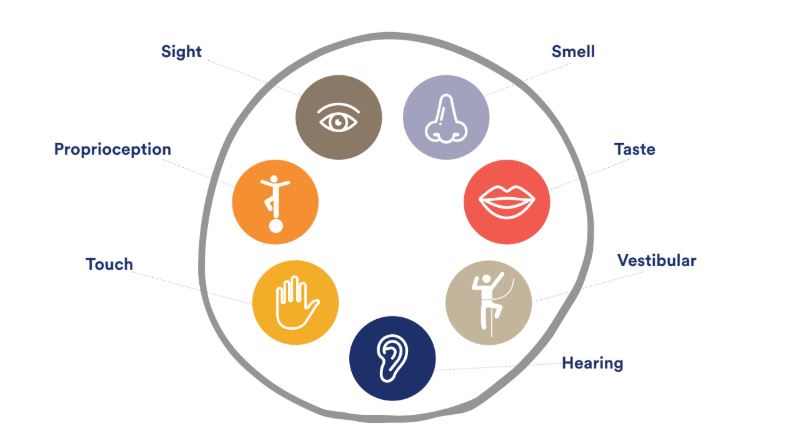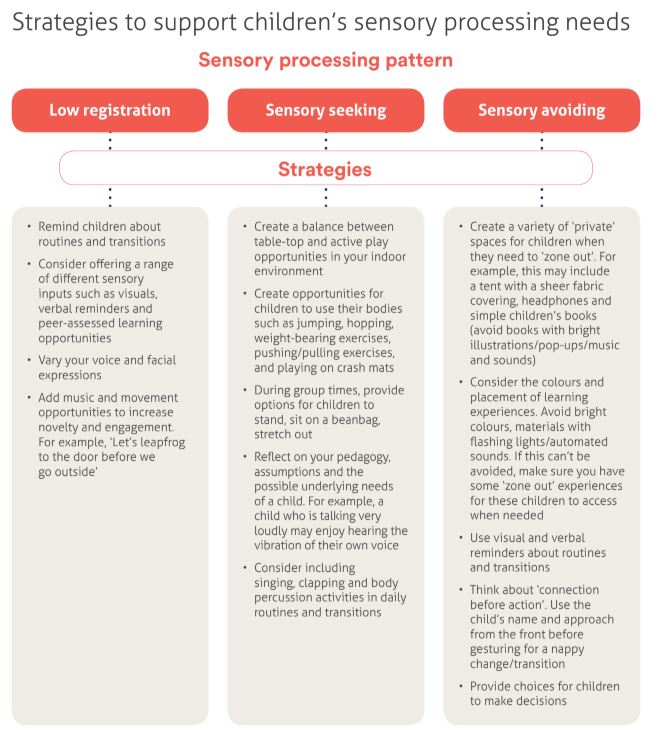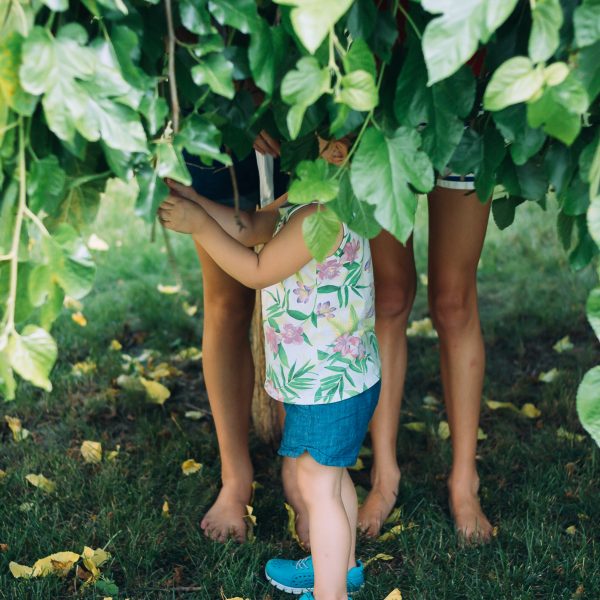The educator’s guide to sensory processing

How can sensory processing help us understand children’s behaviour? Take a look around the room at your service. Can you identify a child that bites and kicks other children for no reason? Do you know a child who travels from one activity to another, spinning as they go? You’re not alone. This article will explain how sensory processing can help you understand and respond to children’s behaviour.
What is sensory processing?
Sensory processing is how a child’s brain makes sense of the seven senses (yes, there are more than just five!). There’s seeing, hearing, tasting, smelling, touching, plus vestibular (moving and balance), and proprioception (a child’s sense of their body position in space).

How sensory processing can help explain challenging or confusing behaviours
Sensory integration is a child’s ability to use information from the sense and respond appropriately.
A child that loses their balance and bumps into other children during a music and movement session may have difficulty with sensory integration. In other words, they are struggling to get the right messages from their brain to their body.
Learning the three main sensory processing patterns can help educators identify when children are having difficulty with sensory integration. These are low registration, sensory seeking and sensory avoiding.
Children who take longer to respond to sensory information and do not seek out sensory experiences may have low registration. These children can lack awareness of their environment, seem easily fatigued, and need extra encouragement and input to follow tasks. During a fire drill, a child with low registration might appear relaxed and removed from their environment, ignoring the alarm and educator’s instructions.
Children who are sensory seeking have a high sensory tolerance. These children might be energetic and constantly seeking sensory experiences. A child who is sensory seeking may be ‘climbing the walls’ at your service. Some sensory seeking children bite or kick other children – not because they want to hurt others – but because the sensory information to their muscles and joints feels good.
Sensory avoiding children don’t seek sensory experiences. THey can be very sensitive to stimuli and easily startled by noises, visuals, touch and motion. They might be resistant to strong flavours, textures and sounds, including tags on clothes and noisy toys. Sensory avoiding children can become distracted and overwhelmed, even by small changes in their environment.
Once you have identified a sensory processing pattern, you can implement strategies to support children’s needs and promote appropriate behaviour.

Obviously, a child’s behaviour cannot always be explained by sensory processing and integration. A child who cannot help bumping into other children during a music and movement session might also be affected by poor sleep and emotional, physiological or other factors.
Your local inclusion professional can offer support to discuss sensory processing and how it may be impacting on your care environment and practice. Make sure you discuss your observations with the child – where appropriate – and with their families, who can often share great insight and expertise.
All the best in making sense of children’s senses!
This article originally appeared in Edition 5 of the Victorian Inclusion Agency’s Embrace magazine, and is republished here with the Editor’s permission.
Popular

Practice
Provider
Quality
Research
Workforce
New activity booklet supports everyday conversations to keep children safe
2025-07-10 09:00:16
by Fiona Alston

Quality
Practice
Provider
Workforce
Reclaiming Joy: Why connection, curiosity and care still matter in early childhood education
2025-07-09 10:00:07
by Fiona Alston

Policy
Practice
Provider
Quality
Research
Workforce
Beyond the headlines: celebrating educators and the power of positive relationships in early learning
2025-07-07 10:00:24
by Fiona Alston













